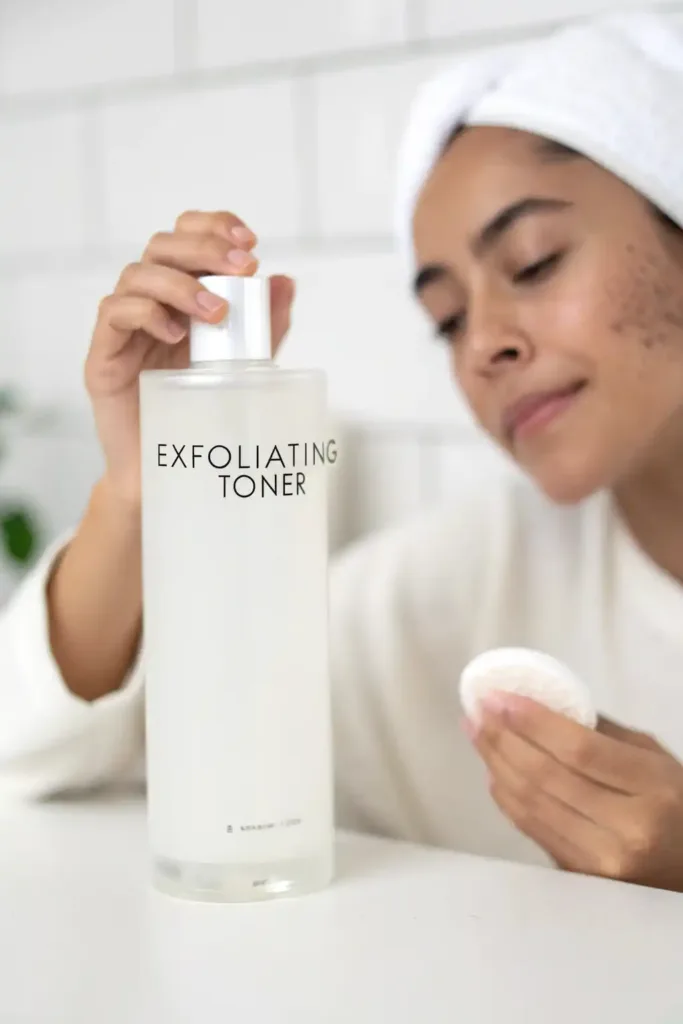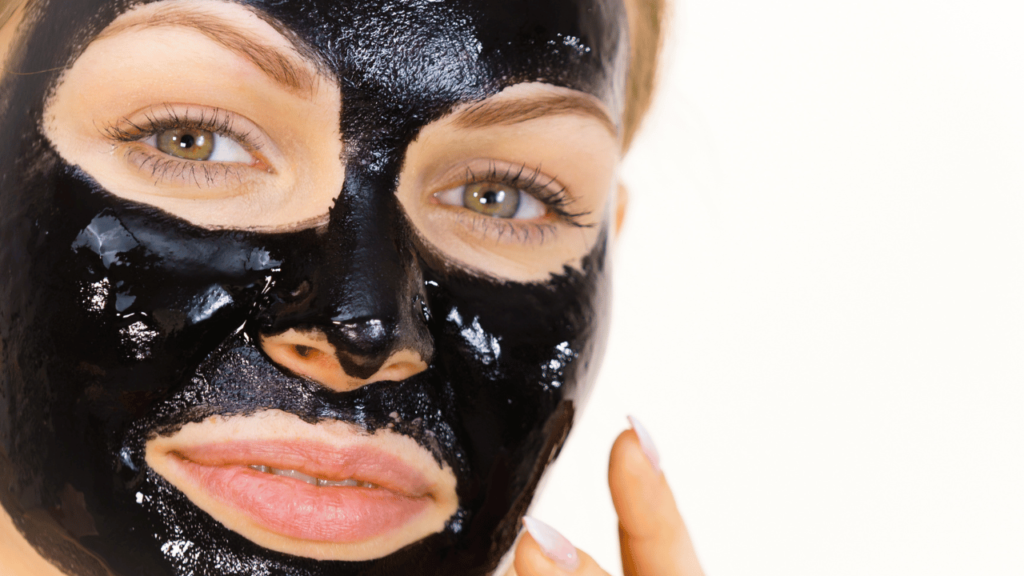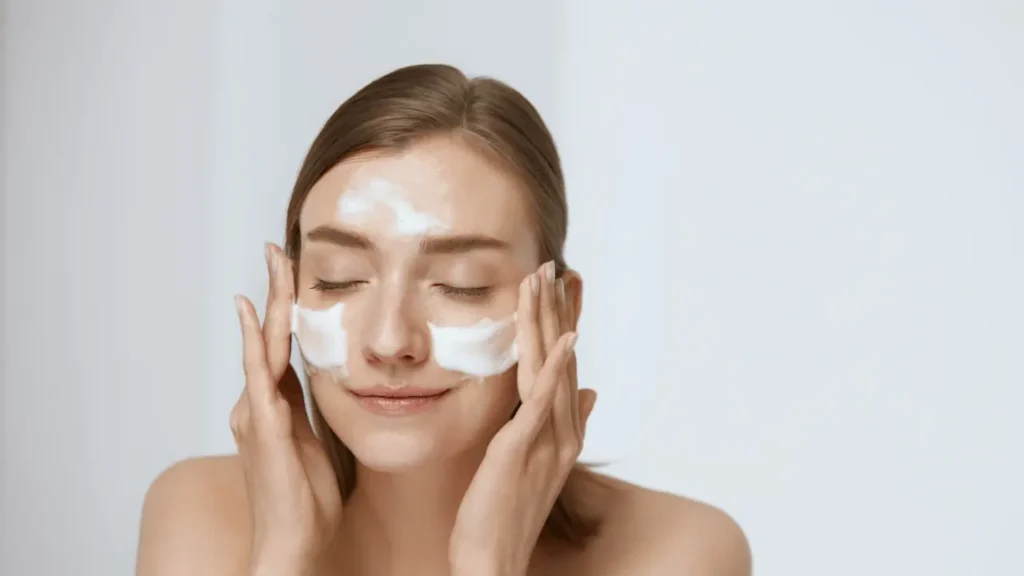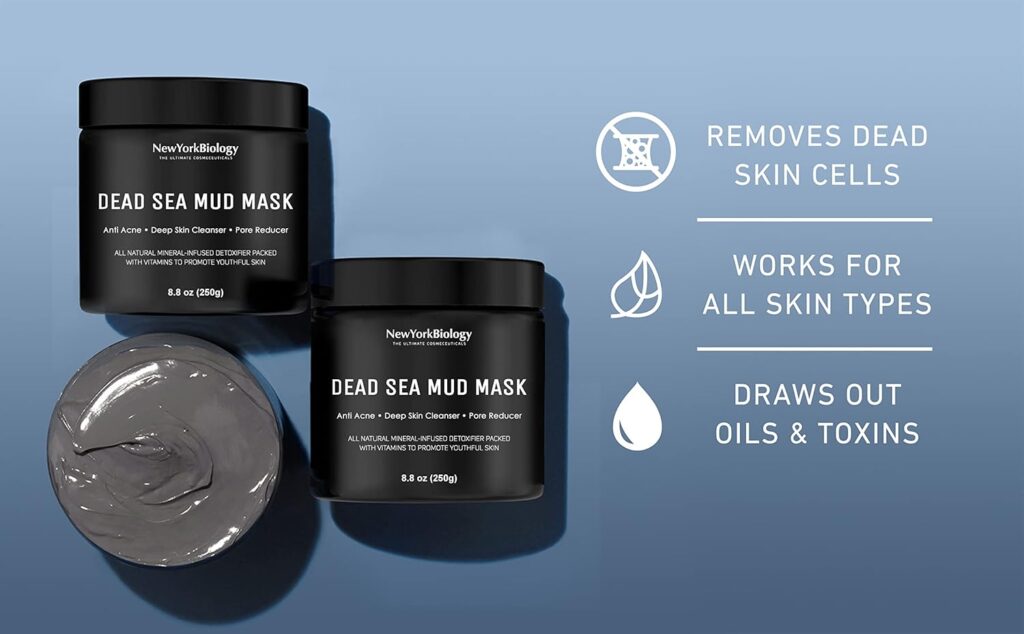Hey, beauty babes! It’s Molly Bennett, your go-to skincare enthusiast, and I’m here to help all my oily-skinned friends out there.

If you’re battling shine, breakouts, or that greasy feeling by noon, this 5-step skincare routine for Oily Skin is your new best friend.
Oily skin can be a challenge, but with the right steps, you can keep it balanced, clear, and glowing. Let’s dive into this simple, effective routine that’ll have you feeling confident in your skin!
Why a 5-Step Routine for Oily Skin?
Oily skin happens when your sebaceous glands produce too much sebum, leading to clogged pores, acne, and that unwanted shine.
A structured routine helps control oil, prevent breakouts, and hydrate your skin without making it feel greasy. Each step in this guide serves a purpose, from cleansing away impurities to protecting your skin from UV damage.
Plus, it’s easy to follow, so you can stick with it daily.
Step 1: Cleanse Like a Pro
Cleansing is the cornerstone of any skincare routine, but it’s essential for oily skin. You need to wash away excess oil, dirt, and impurities that can clog pores and cause breakouts.
Cleansing twice a day—morning and night—keeps your skin fresh and prepped for the next steps.

What to Use: Opt for a gentle foaming cleanser formulated for oily skin. These cleansers remove oil without stripping your skin’s natural moisture. A top pick is the CeraVe Foaming Facial Cleanser.
It’s packed with niacinamide to control oil, hyaluronic acid for hydration, and ceramides to strengthen your skin barrier. It’s effective yet gentle enough for daily use.
How to Do It: Wet your face with lukewarm water, apply a small amount of cleanser, and massage gently in circular motions.
Rinse thoroughly and pat dry with a clean towel.
Pro Tip: If you wear makeup or sunscreen, try double cleansing at night.
Start with a micellar water like Garnier Micellar Cleansing Water to remove makeup, then follow with your foaming cleanser for a deep clean.
Step 2: Tone for That Extra Clean
Toning is a game-changer for oily skin, even if it feels like an extra step.
A good toner removes any leftover dirt or oil after cleansing, balances your skin’s pH, and preps it for serums and moisturizers.
It can also help minimize pores and reduce shine.

What to Use: Look for a toner with exfoliating ingredients like salicylic acid, glycolic acid, or lactic acid. These help unclog pores and control oil production.
My favorite is the Paula’s Choice Skin Perfecting 2% BHA Liquid Exfoliant.
Its salicylic acid formula gently exfoliates, dissolves sebum, and reduces redness without drying out your skin.
How to Do It: After cleansing, apply toner to a cotton pad and swipe it gently across your face, avoiding the eye area. Let it absorb before moving to the next step.
Why It Works: Salicylic acid penetrates pores to prevent breakouts, making it a must-have for oily, acne-prone skin.
Step 3: Treat Your Skin’s Specific Needs
This step is all about targeting your skin’s unique concerns, like acne, large pores, or uneven texture.
Oily skin often comes with breakouts, so a serum or spot treatment can work wonders to keep blemishes at bay.

What to Use: For acne-prone skin, choose a serum with salicylic acid or benzoyl peroxide. For overall oil control and texture improvement, niacinamide is a superstar.
I recommend The Ordinary Niacinamide 10% + Zinc 1%. It’s budget-friendly, reduces oiliness, minimizes pores, and soothes redness.
While another option is TULA Skin Care Brightening Treatment Drops – Vitamin C Serum, brightens the Look of Dull Skin & Dark Spots
How to Do It: Apply a few drops of serum to clean, toned skin and gently massage it in. If you’re using a spot treatment, apply it directly to blemishes.
Pro Tip: For stubborn breakouts, try a spot treatment like Clean & Clear Persa-Gel 10 with benzoyl peroxide to zap pimples overnight.
Step 4: Moisturize Without the Grease
Yes, even oily skin needs moisturizer! Skipping this step can trick your skin into producing more oil to compensate for dehydration.
The key is to use a lightweight, oil-free formula that hydrates without clogging pores.

What to Use: A gel-based or water-based moisturizer is perfect for oily skin. My go-to is the La Roche-Posay Effaclar Mat Moisturizer.
It’s designed for oily and acne-prone skin, providing hydration while mattifying your complexion to reduce shine.
How to Do It: Apply a small amount to your face and neck after your serum, massaging gently until absorbed.
Why It’s Important: Hydrated skin is less likely to overproduce oil, and a good moisturizer strengthens your skin barrier, keeping it healthy.
Step 5: Shield with Sunscreen
Sunscreen is a non-negotiable step, no matter your skin type. UV rays can damage your skin, worsen oiliness, and cause premature aging.
Plus, ingredients like salicylic acid can make your skin more sun-sensitive, so daily protection is crucial.

What to Use: Choose an oil-free, non-comedogenic sunscreen with broad-spectrum SPF 30 or higher. The EltaMD UV Clear Broad-Spectrum SPF 46 is a fan favorite for oily skin.
It’s lightweight, doesn’t leave a white cast, and contains niacinamide to soothe and balance your skin.
How to Do It: Apply sunscreen as the final step of your morning routine, using about a nickel-sized amount for your face. Reapply every two hours if you’re outdoors.
Pro Tip: Look for sunscreens with zinc oxide or titanium dioxide, as these physical blockers are less likely to irritate oily skin.
Why This Routine Works
This 5-step routine is tailored to oily skin’s unique needs:
- Cleansing removes excess oil and prevents clogged pores.
- Toning balances pH and provides gentle exfoliation.
- Treating target acne and oiliness with active ingredients.
- Moisturizing hydrates without adding oil, regulating sebum production.
- Sunscreen protects against UV damage, which can worsen oiliness and breakouts.
Consistency is key, and with time, you’ll likely see less shine, fewer breakouts, and healthier skin.
Extra Tips for Oily Skin
- Exfoliate Weekly: Use a gentle exfoliant like Paula’s Choice BHA 1-2 times a week to remove dead skin cells and prevent clogged pores.
- Blotting Papers: Keep Clean & Clear Oil-Absorbing Sheets handy for quick shine control during the day.
- Hydrate Internally: Drink plenty of water to support overall skin health and regulate oil production.
- Avoid Touching Your Face: This can transfer oils and bacteria, leading to breakouts.
- Cleanse After Sweating: Wash your face after workouts to remove sweat and oil, as recommended by the American Academy of Dermatology.
Common Mistakes to Avoid
- Over-cleansing: Washing more than twice a day can strip your skin, causing it to produce more oil.
- Skipping Moisturizer: Dehydrated skin can lead to increased oil production.
- Using Heavy Products: Avoid thick creams or oils that can clog pores.
- Forgetting Sunscreen: UV exposure can worsen oiliness and cause long-term damage.
- Overusing Actives: Too much salicylic acid or retinol can irritate your skin, so start slowly.
FAQ
- Do I really need to moisturize if my skin is oily?
Yes! Moisturizing prevents dehydration, which can trigger excess oil production. Use a lightweight, oil-free moisturizer to keep your skin balanced. - How often should I exfoliate?
Exfoliate 1-2 times a week to avoid irritation. Over-exfoliating can strip your skin and worsen oiliness. - Can I use retinol if I have oily skin?
Yes, retinol can help regulate oil and improve acne. Start with a low concentration once or twice a week at night, and always follow with sunscreen. - Is it okay to skip sunscreen if I don’t go outside much?
No, UV rays can penetrate windows, causing damage over time. Daily sunscreen is essential, even indoors. - What should I look for in a sunscreen for oily skin?
Choose oil-free, non-comedogenic sunscreens with SPF 30 or higher. Physical blockers like zinc oxide or titanium dioxide are great for oily skin. - How long will it take to see results?
Results vary, but with consistent use, you may notice less shine and fewer breakouts in 4-6 weeks. Consult a dermatologist if issues persist.
Affiliate and AI Use Disclosure
Some links in this post are affiliate links. If you make a purchase through them, I may earn a small commission at no extra cost to you. This helps support my blog and keep the content coming! Additionally, AI technology was used to assist in drafting parts of this post, but all content has been reviewed and edited by a human to ensure accuracy and quality.
Wrapping It Up
There you have it, babes—a foolproof 5-step skincare routine for oily skin! Stick with it, be patient, and your skin will thank you with less shine and fewer breakouts. Got questions or need more tips? Drop them in the comments below. Until next time, stay gorgeous!








